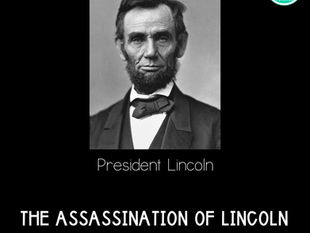
A Free Reading Passage on John Winthrop for AP U.S. History
May 24, 2024
3 min read
0
16
0
John Smith is a referenced topic in the European Colonization topic in Period 2 of AP U.S. History. You could reference this example on your AP U.S. History test.

John Winthrop, a central figure in the early history of colonial America, is best known for his role as the first governor of the Massachusetts Bay Colony. His vision, leadership, and dedication to Puritan principles were key in shaping the colony’s development and the Puritan influence in New England.
Born in England in 1588, John Winthrop was educated at Trinity College, Cambridge, and trained as a lawyer. As a devout Puritan, he became increasingly disillusioned with the Church of England, which he and other Puritans felt had not gone far enough in its reforms to purge itself of Catholic influences. The growing religious and political tensions in England motivated many Puritans to seek a new life in America, where they hoped to establish a “city upon a hill”—a model of religious purity and governance that would inspire reform in the Church of England and serve as an example for the world.
In 1630, Winthrop led a group of Puritan settlers to the New World aboard the ship Arbella. Upon their arrival, they founded the Massachusetts Bay Colony, settling in the area around present-day Boston. Before disembarking, Winthrop delivered his famous sermon, “A Model of Christian Charity,” in which he outlined his vision for the new colony. He emphasized the importance of community, charity, and a covenant with God, stating that the colony should be as a “city upon a hill,” watched by the world.
As governor, a position he held for 12 of the colony’s first 20 years, Winthrop was a strong and pragmatic leader. He guided the colony through its early struggles, including food shortages, harsh winters, and conflicts with Indigenous peoples. Under his leadership, the Massachusetts Bay Colony developed a stable government based on Puritan religious principles, with a strong emphasis on communal responsibility and moral discipline.
Winthrop’s governance was characterized by a theocratic approach, where church and state were closely intertwined. Only male church members were allowed to vote and hold office, ensuring that the colony’s laws aligned with Puritan beliefs. This created a tightly knit, religiously homogeneous community, but it also led to tensions and conflicts with those who held different views.
The leaders of the Massachusetts Bay Colony banished those who did not follow the Puritan belief system. Some of the men banished from the colony went on the establish new colonies, such as Rhode Island and Connecticut. One of the most famous people to be banished from the colony was Anne Hutchinson. She was tried and convicted of promoting the idea of a “covenant of grace” over the “covenant of works.” After her banishment, she relocated to Rhode Island and continued her teaching.
Winthrop’s leadership helped establish the Massachusetts Bay Colony as one of the most successful and influential of the early American colonies. His vision of a society governed by religious principles had a lasting impact on the development of New England and the broader American ethos.
John Winthrop died in 1649, but his legacy lives on. He is remembered not only for his role in founding the Massachusetts Bay Colony but also for his vision of America as a beacon of religious and moral ideals. His writings, including his journal and letters, provide a valuable record of the early years of the colony and continue to be studied for their insights into the Puritan mindset and the challenges of establishing a new society in the New World.
PRINTABLE READING PASSAGE ON JOHN WINTHROP
Would you prefer to share a printable passage with your students? Click the image below to grab it!
Do you want to watch a video about the Massachusetts Bay Colony?
European Colonization
AP U.S. History






